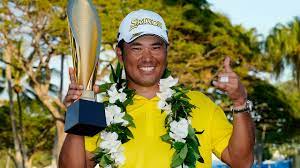Golf is not a casual game that you can play without changing your swing thought for every type of club. The most dramatic change should be made when using your driver and your irons but every club requires attention. These swing thoughts can revolutionize your game.
Every golfer has different physical injuries, flexibility, and strength as well as clubs with different weights and shaft flexibility. I am recommending that you test all of your clubs at a practice facility using the recommendations below and then make slight adjusts for your stance, grip and ball position to accommodate your physical issues. Determine your ideal setup for each type of club.
There are some basics that never change for your setup and swing sequence:
–Your grip should be light and relaxed. Tense muscles used by Bryson DeChambeau will NOT improve most golfer’s games. Muscle tension only changes the consistency of your game. You may even have to adjust your stance and swing as your body and mind relax or tense over 18 holes of golf.
–Avoid swinging over the top by keeping your leading wrist flat to help you shallow the downswing for all of your fairway clubs (driver, woods, hybrids and irons).
–Your backswing should take at least double the time of your downswing to give you more time to coil your body and to add wrist lag. (Rushing your backswing limits your swing and power!) Hideki Matsuyama showed us that a slow backswing can create powerful results.

Each Type of Club Requires a Unique Swing:
Driver: Position your teed-up ball forward of the center of your stance so that the arc of your swing is RISING to launch your ball upward. To optimize your swing, tilt your spine to your trailing side for more power to launch your ball upward as you push forward with you trailing foot.
Fairway Woods and Hybrids: These clubs are designed to slide over the surface of the ground to avoid slowing down their impact speed at the launch angle of the face of the club. Impact should be at the bottom of your swing arc. You can’t afford to be swaying back on your trailing foot during impact. To optimize your impact, rotate your hips and shoulders around your straight spine over your ball and avoid swaying back during your backswing.
Irons: These are the only clubs designed to impact your ball before the arc of your club reaches low enough to take any divot. Ideally you want your hands leading the shaft forward at the point of impact. To optimize your impact, your weight should be moving to your leading foot during the transition at the top of your swing.
Putter: Your best point of impact is exactly where your swing arc is starting to rise to ensure that you are rolling your ball OVER instead of pushing your ball (and causing it to bounce). Ideally your putter face needs to be swinging directly up your target line at the point of impact (without any slicing or side motion to the swing).
Golf is NOT a no-brainer. To improve your game, you can’t afford to make a swing without planning the impact motion of the club that you selected. Commit to your swing and make a practice swing to ensure that you are making the correct impact with the ball and ground for the club that you selected. Practice with GOLFSTR+ to ensure that your arms and wrists are in the ideal position throughout each swing. Buy one today at www.GOLFSTR.com
Golf Truism #92: If your best shots are the practice swing and the ‘gimme putt’, you might want to reconsider this game.



[…] Source link […]